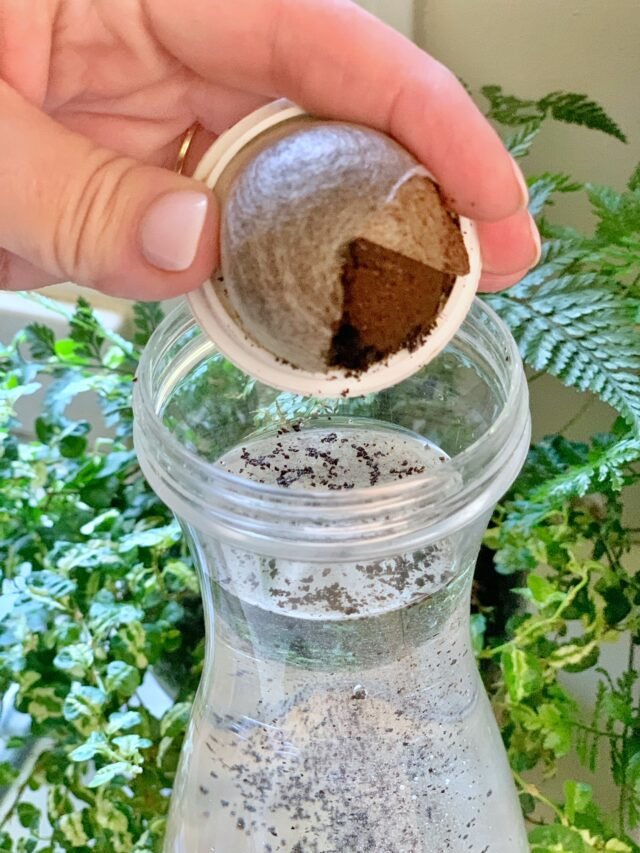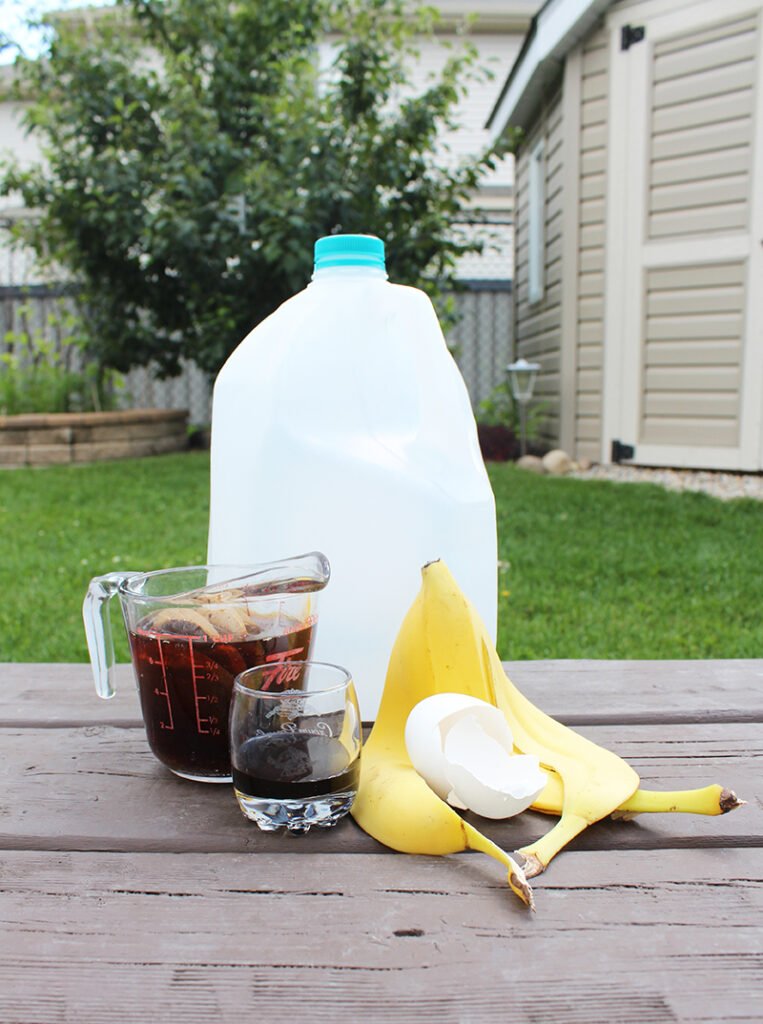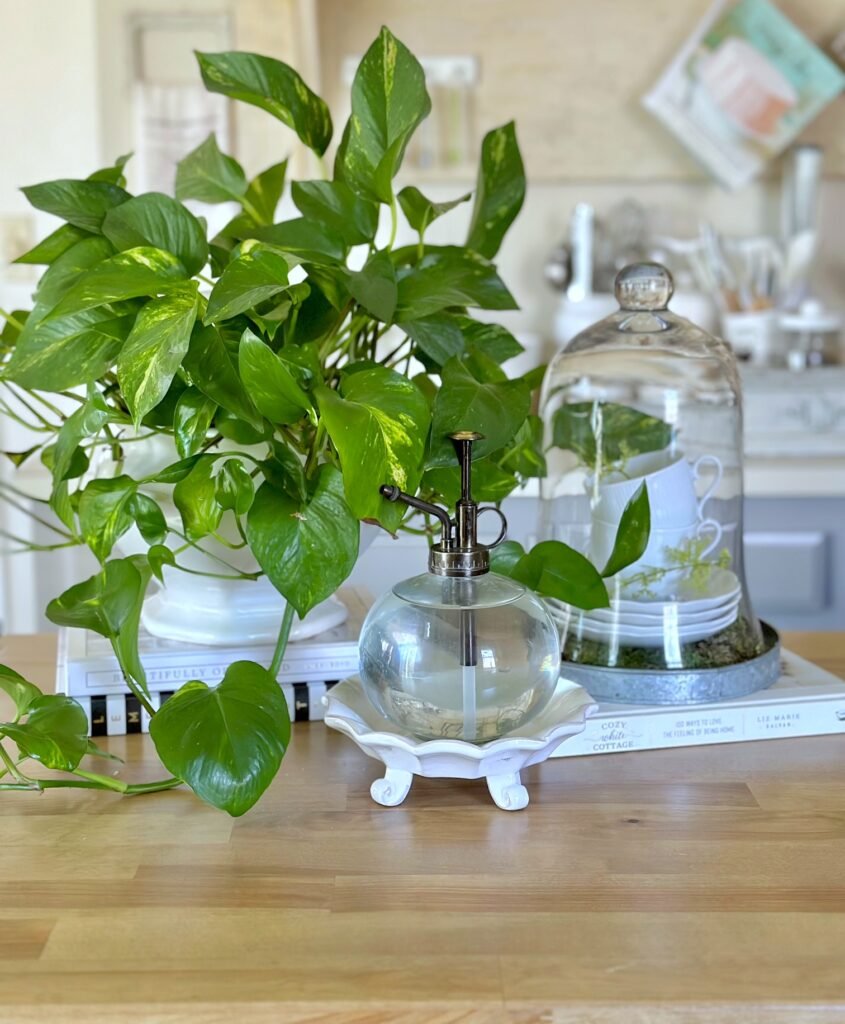Discover the secrets to nurturing lush and thriving Pothos with a simple, cost-effective homemade liquid fertilizer recipe. Unlock the potential of your beloved houseplants with this comprehensive guide.
homemade liquid fertilizer Pothos, the beloved trailing vine, has become a household favorite for its easy-going nature and air-purifying abilities. However, like all plants, Pothos requires proper nourishment to thrive and maintain its vibrant foliage. While commercial fertilizers can be effective, many plant enthusiasts prefer the natural and cost-effective approach of homemade liquid fertilizers. In this article, we’ll explore the benefits of using homemade liquid fertilizers for Pothos, share a simple recipe and provide tips for successful application.
Here’s a short chart with information about Pothos (Epipremnum aureum):
| Aspect | Information |
|---|---|
| Botanical Name | Epipremnum aureum |
| Plant Type | Evergreen Vine |
| Zones | 10-12 (outdoors); widely grown indoors |
| Exposure | Low to Bright Indirect Light |
| Bloom Time | Rarely blooms indoors |
| Height/Spread | Vining habit, can grow up to 10 feet or more indoors |
The Benefits of Homemade Liquid Fertilizer

- Cost-Effective: By utilizing common household ingredients, you can create a nutrient-rich fertilizer without breaking the bank.
- Organic and Eco-Friendly: Homemade fertilizers are free from synthetic chemicals, making them a more environmentally conscious choice.
- Customizable: With a variety of natural ingredients at your disposal, you can tailor the fertilizer to meet the specific needs of your Pothos plants.
- Nutrient-Rich: Natural ingredients like compost, manure, and plant extracts provide essential nutrients for optimal growth and health.
The Simple Homemade Liquid Fertilizer Recipe

Ingredients
- 1 gallon of water
- 1 cup of compost or well-rotted manure
- 1 banana peel
- 1 tablespoon of Epsom salt (optional)
Instructions
- Fill a large container or bucket with one gallon of water.
- Add the compost or well-rotted manure to the water and stir well.
- Chop or tear the banana peel into small pieces and add it to the mixture.
- If desired, add one tablespoon of Epsom salt to provide additional magnesium and sulfur for your Pothos.
- Cover the container and let the mixture steep for 24 to 48 hours, stirring occasionally.
- After steeping, strain the liquid through a fine mesh strainer or cheesecloth to remove any solid particles.
- Your homemade liquid fertilizer is now ready for use!
Feeding Your Pothos with Homemade Liquid Fertilizer

Frequency and Dilution
- During the growing season (spring and summer), feed your Pothos every two to four weeks with the undiluted liquid fertilizer.
- In the dormant season (fall and winter), reduce the feeding frequency to once a month and dilute the fertilizer with equal parts water.
Application Tips
- Water your Pothos thoroughly before applying the liquid fertilizer to ensure the soil is moist but not waterlogged.
- Pour the fertilizer directly onto the soil, avoiding the plant’s foliage and stems to prevent potential burning or discoloration.
- After applying the fertilizer, water the plant again to help distribute the nutrients throughout the soil.
- Rotate your fertilizer application, alternating between the homemade liquid fertilizer and a balanced, water-soluble fertilizer every other feeding.
Maximizing the Benefits of Homemade Liquid Fertilizer
- Aeration: Regularly aerating the soil by gently poking holes or mixing the top layer can improve nutrient absorption and root growth.
- Pruning: Periodic pruning encourages new growth and helps maintain a healthy shape, enabling the plant to better utilize the nutrients provided.
- Proper Lighting: Pothos thrives in bright, indirect light. Ensure your plant receives adequate lighting to support photosynthesis and efficient nutrient utilization.
- Well-Draining Soil: Use a well-draining potting mix or amend the soil with materials like perlite or bark to prevent waterlogging and promote healthy root development.
Additional Homemade Fertilizer Boosters
While the basic recipe provides essential nutrients, you can further enhance your homemade liquid fertilizer by incorporating the following natural boosters:
- Eggshells: Crushed eggshells are an excellent source of calcium, which promotes strong cell walls and overall plant health.
- Seaweed Extract: Rich in micronutrients and growth hormones, seaweed extract can stimulate root development and overall vigor.
- Comfrey Leaves: Packed with nutrients like nitrogen, potassium, and calcium, comfrey leaves can be steeped and added to the fertilizer for an extra boost.
- Wood Ash: A natural source of potassium and other minerals, wood ash can be sparingly added to the mixture for enhanced nutrient availability.
Troubleshooting and Safety Precautions
While homemade liquid fertilizers are generally safe, it’s essential to exercise caution and follow best practices:
- Avoid Over-Fertilizing: Excessive fertilizer application can lead to salt buildup, root burn, and potential toxicity. Always follow recommended dilution rates and feeding schedules.
- Use Clean Containers: Ensure all containers used for mixing and storing the fertilizer are clean to prevent the growth of harmful bacteria or fungi.
- Protect Yourself: Wear gloves and avoid direct contact with the fertilizer mixture to prevent skin irritation or accidental ingestion.
- Store Properly: Keep the fertilizer in a cool, dark place and use it within a few weeks for maximum potency and effectiveness.
Nurturing your Pothos with a homemade liquid fertilizer not only provides essential nutrients but also offers a cost-effective and eco-friendly solution. By following the simple recipe and application tips outlined in this guide, you can unlock the vibrant potential of your beloved trailing vines. Embrace the joy of DIY gardening and witness your Pothos plants flourish with lush, healthy foliage. Happy gardening!
Pingback: The Unique Lady Finger Cactus: A Guide to Caring for This Quirky Plant - Solano Garden
Pingback: How to Grow and Care for Areca Palms - Gardener's School
Pingback: Homemade Liquid Fertilizer for Vibrant Pothos P...
Pingback: The Ultimate Guide to Chicken Manure Pellets: Benefits, Application and Best Practices
Pingback: Chili Plants: The Ultimate Guide to Growing Them -
Pingback: How to Grow and Care for Song of India – Dracaena reflexa -
Pingback: Peat-Free Gardening: Debunking the Myths and Embracing Sustainable Solutions
Pingback: Banish Red Spider Mite : A Comprehensive Guide for a Pest-Free Garden
Pingback: Growing and Caring for the Beautiful Desert Rose Plant -
Pingback: Jessenia Pothos: A Gorgeous Addition to Your Indoor Plant Collection
Pingback: Shampoo Ginger Lily Care: Planting, Growing and Maintenance Guide
Pingback: Flowering Tobacco: Essential Care Tips for Lush Blooms
Pingback: The Beauty of Hoya Plants: Care and Maintenance Tips
Pingback: Arrowhead Plant Care: Everything You Need to Know
Pingback: Blue Hibiscus: A Guide to Growing and Caring
Pingback: Hibiscus Flower: The Ultimate Guide to Growing and Caring
Pingback: Why Black Velvet Alocasia is the Perfect Houseplant
Pingback: Power of Chicken Manure Pellets : A Gardener’s Guide to Nutrient-Rich Goodness
Pingback: Discover the 9 Best Mother of Thousands Varieties | Mother of Millions Types
Pingback: Black Diamond Watermelon : A Comprehensive Guide
Pingback: Master the Art of Growing Star Flowers from Seed
Pingback: San Pedro Cactus: Growing from Seed to Success
Pingback: Blue Orchid Care 101: Water, Light & Growing Tips -
Pingback: The Beauty of Peach Tree Flowers : A Gardener’s Guide
Pingback: Easy Philodendron Plant Care : A Beginner’s Guide
Pingback: The Elegant Parlour Palm: A Beginner's Guide to Caring for This Charming Houseplant - Solano Garden
Pingback: Bridal Veil Plant : A Guide to Growing and Caring
Pingback: How to Grow and Care for Broom Plants - Gardener's School
Pingback: How to Grow and Care for Calathea Orbifolia-Gardener's School
Pingback: 15 Effective Homemade Fertilizers and Soil Enhancers for Organic Gardening (2024 Guide)
Pingback: Philodendron Florida Ghost Plant Care Guide
Pingback: Orange Poppies : Vibrant Blooms for Your Garden